source https://www.sciencedaily.com/releases/2021/11/211126130851.htm
In the quantum realm, not even time flows as you might expect

source https://www.sciencedaily.com/releases/2021/11/211126130851.htm





















In part two of our two-part series on one of the city’s oldest transit properties, we bring you the history of Muni’s Green Division. Green Division, also known as Muni Metro Center, has served as the primary maintenance and repair facility for our rail fleet for over 40 years.
Construction began on Green Division in 1975. This new rail facility would replace Elkton Shops, which was built in 1907. The new shops were built in two phases, first the shop building then the rail yard.
 This 1976 photo shows major excavation and concrete work underway for the main shops building of Green Division. At far left is Elkton Shops built in 1907 by the United Railroads Company.
This 1976 photo shows major excavation and concrete work underway for the main shops building of Green Division. At far left is Elkton Shops built in 1907 by the United Railroads Company.
In phase one of the project, crews demolished the bus yard occupying the eastern half of the property and built a massive new building that would house repair and maintenance shops for a new fleet of Muni rail vehicles. This phase took about two years to complete.
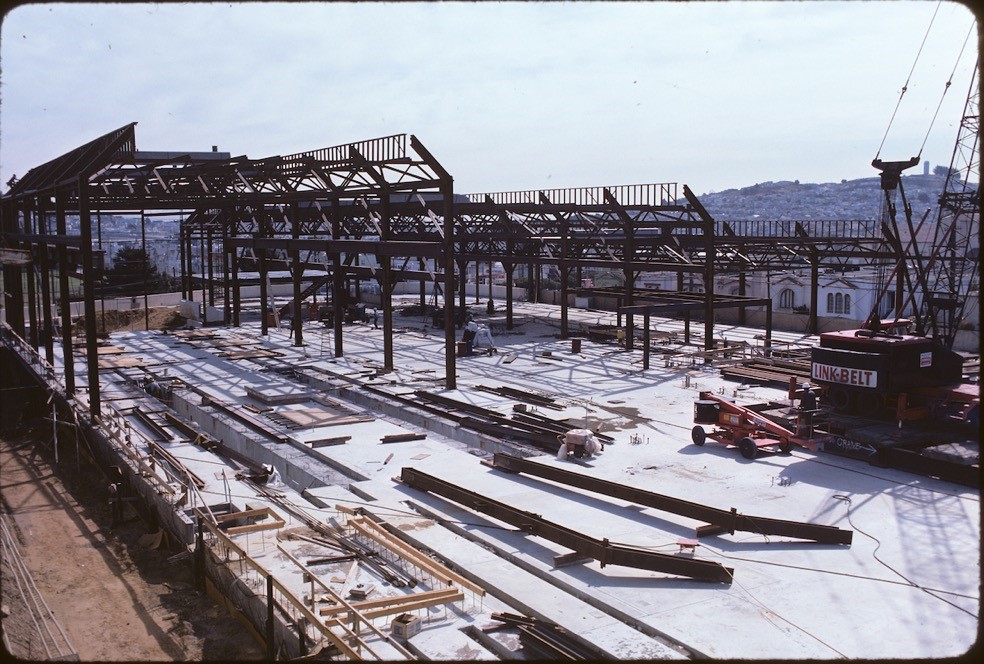
Construction progress on Muni Metro Center in November 1975 shows the main structure of the building taking shape.
By May 27, 1977, the new shop building was completed and employees finished their last day of work in the 70-year-old Elkton Shops. Just a few days later, they moved into a brand-new building and demolition began on Elkton to make way for construction of a large rail yard in phase two of the project.

This staff group photo was taken on opening day of Muni Metro Center on June 1, 1977.
Work on the rail yard progressed quickly as Muni was anticipating the arrival of the first light rail vehicles or LRVs, a modernized version of the electric streetcars of the past. The new LRVs were designed and built by the Boeing Vertol company in a joint venture between Muni and Boston’s MBTA. The new vehicles would run in the Muni Metro, which combined Muni’s surviving streetcar lines with a subway underneath Market Street to create a more integrated rail system.
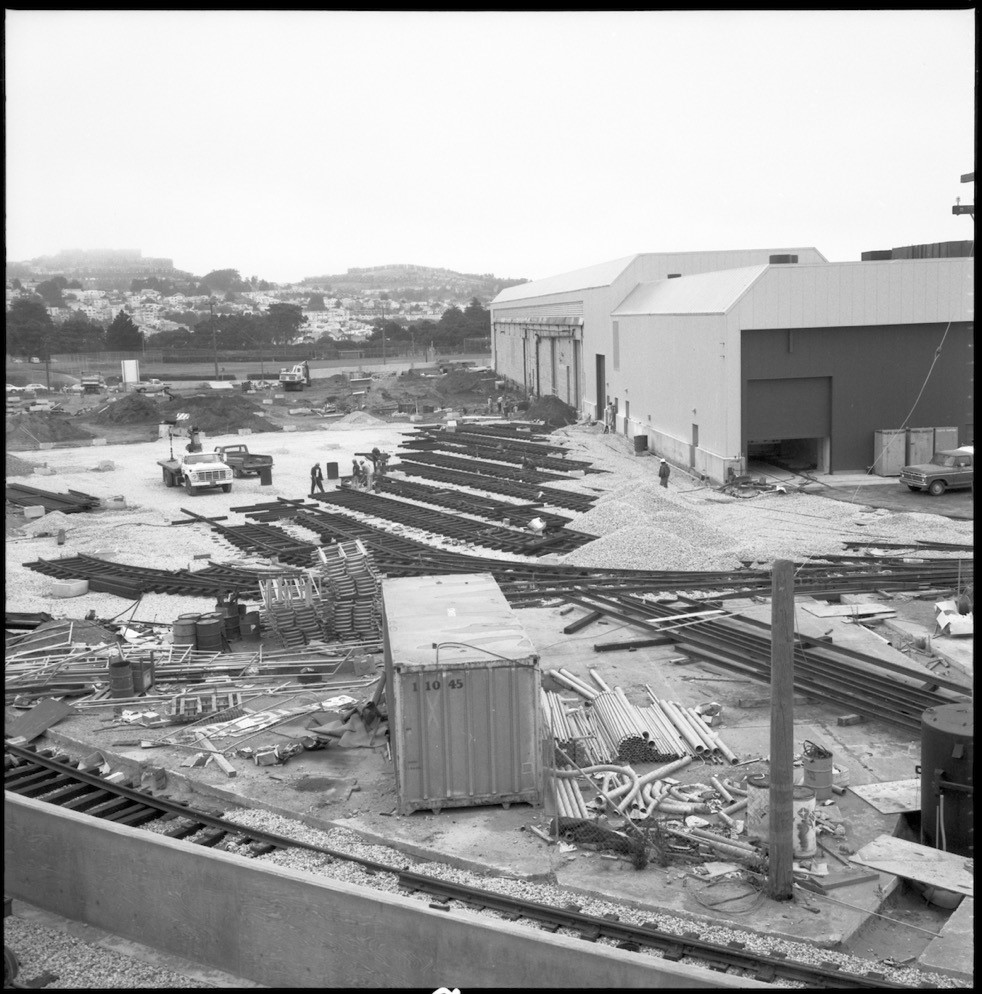
Work progresses on the rail yard where Elkton Shops once stood in this August 1977 photo.
The arrival of Boeing LRVs came in October 1977 while the rail yard was still under construction. A small crowd of city officials, staff and press celebrated the arrival of the first two cars outside Green Division. In a short time over 100 LRVs would come to form the backbone of all Muni rail lines.
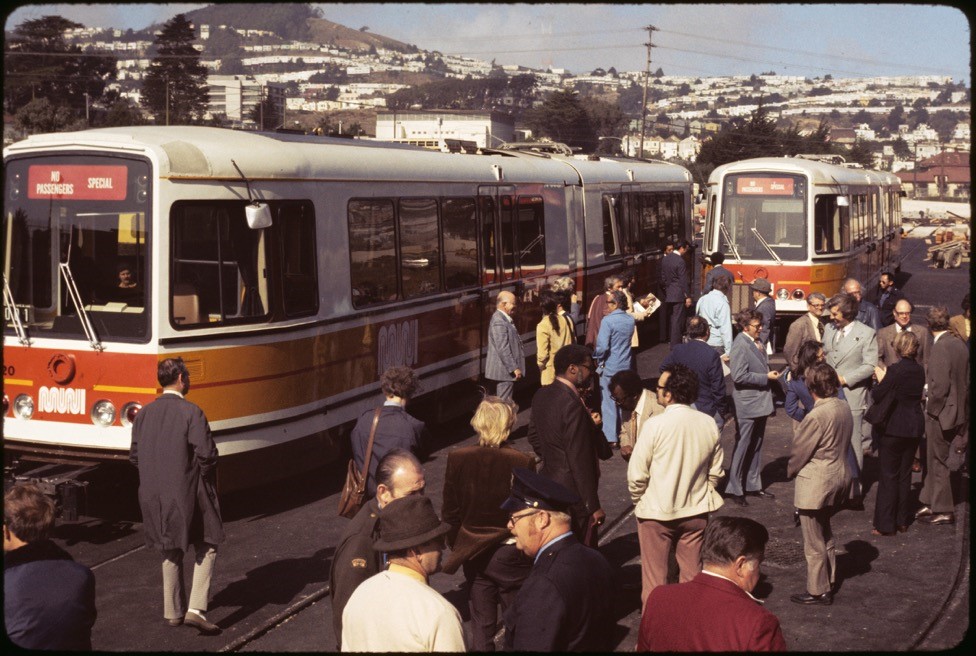
This October 24, 1977 photo shows Muni’s first two LRVs on display after arrival from the factory.
On July 11, 1979, Muni Metro Center was dedicated and a new fleet of LRVs waited in the yard to start serving the city. Just one year later, the Muni Metro system and Market Street Subway would open and the railyard’s key role in maintaining the new fleet would come into full effect.

This November 1979 aerial shot looking southwest near San Jose and Ocean Avenues shows a newly completed Muni Metro Center and surrounding area.
On May 12, 1987, Muni Metro Center was re-dedicated as the “Curtis E. Green Light Rail Center” in honor of former Muni General Manager Curtis E. Green, who worked his way up from a bus driver to become the first African American appointed head of Muni.
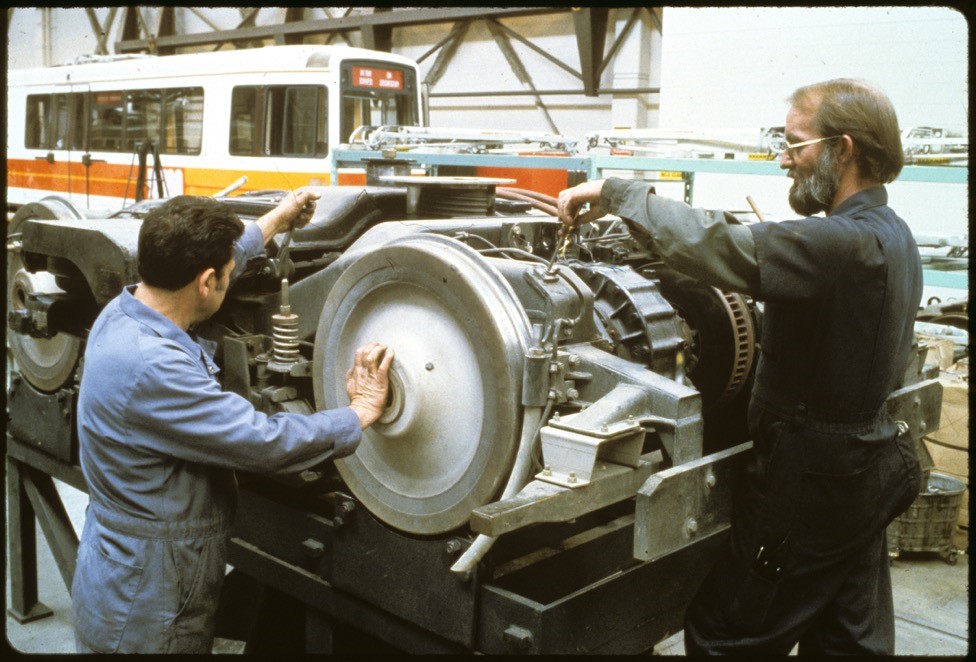
Green Division shop staff work on the truck from a Boeing LRV in this early 1980s photo.
Today, staff at Green Division carry on an over 100-year-old tradition started in 1907 with the United Railroads’ Elkton Shops. Working daily performing every job from routine maintenance and inspections to overhauling major components, the shops are critical to moving San Francisco.




















































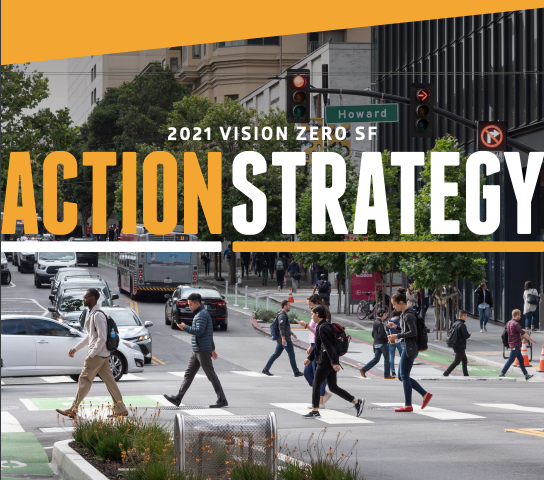

This week, San Francisco Mayor London Breed released the 2021 Vision Zero Action Strategy—our City’s multi-agency framework for eliminating traffic deaths and reducing severe injuries.
The City and County of San Francisco committed to ending traffic fatalities through Vision Zero in 2014. Since then, our approach has continued to evolve – we've incorporated new strategies and expanded on existing and successful programs. In this updated plan, we commit to bold and ambitious strategies to create safer streets. We will double down on redesigns to make streets safer for people, and expand programs like our Vision Zero Quick-Build across the city’s High Injury Network (HIN), the 13% of city streets that account for more than 75% of severe and fatal injuries.
The Vision Zero Action Strategy lays out a clear path for the city towards this ambitious goal over the next three years. The strategy focuses on slowing speeds and safer crossings. More than 80 miles of our city’s High Injury Network have been upgraded or are in construction with core safety improvements. This strategy commits the City to expand the successful Quick-Build initiative to cover the remaining 80 miles in the High-Injury Network. As part of this effort, we are committed to adding daylighting and high-visibility crosswalks to every intersection along the HIN. We will also update all eligible signals to give pedestrians head-starts and more time for crossing the street. The strategy also commits us to updating our City’s Active Transportation Network, connecting car-light/car-free streets to protected bike lanes by 2024. Through these design changes, we can make walking, biking, and taking transit safer and more accessible for San Franciscans.
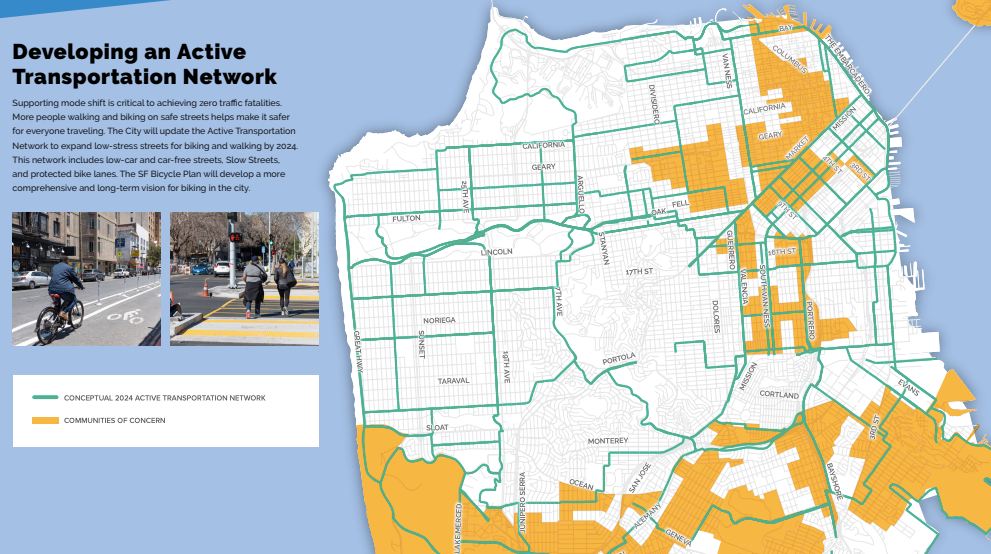
This strategy shows how policy change can make a significant impact in expanding our tools for safer streets. Under the recently passed AB43, which gives cities the authority to lower speed limits along certain corridors, San Francisco will begin implementing 20 mph zones along key streets as early as next year. We will also develop and implement a comprehensive speed management plan, including education and outreach to advance a culture of traffic safety. Lowering speeds by even 5 mph can make a significant difference for safety: We have seen from peer cities like Seattle that implementing 20 mph zones can decrease collisions by around 20%. We will also continue to push for policies like congestion pricing that incentivize mode shifts away from driving and toward active transportation and public transit.
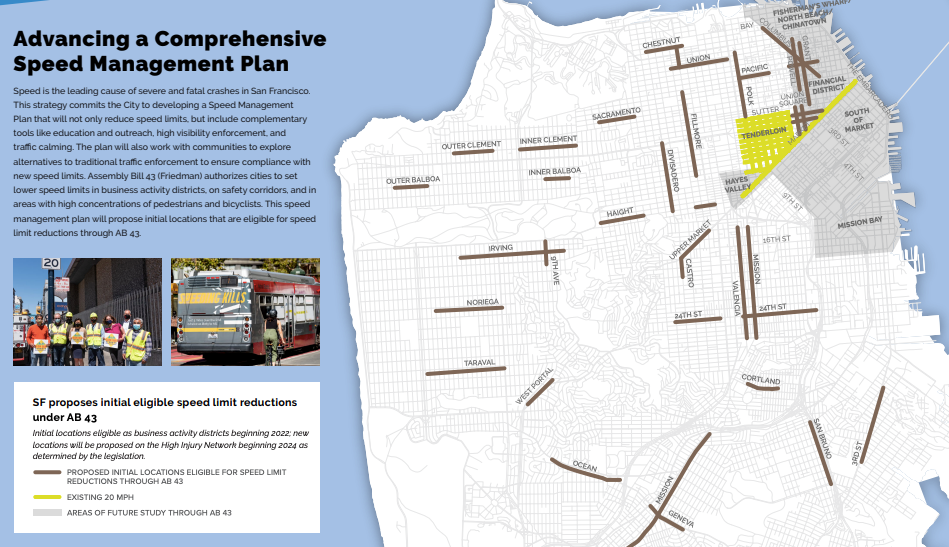
As we begin to implement the new Vision Zero Action Strategy, we are keeping equity core to our focus. The Vision Zero HIN is disproportionately concentrated in San Francisco’s communities of color, and vulnerable people—including seniors, people with disabilities, unhoused populations, and people of color—face the greatest risks from traffic-related injuries and deaths. Our Action Strategy prioritizes these communities in engagement, education, and implementation of Vision Zero programs. This past year, we rolled out 20 mph speed limits throughout the Tenderloin, where every street is on the High Injury Network. We are also focused on pursuing legislative authority for new strategies, like speed safety cameras, that are effective in reducing crashes and can reduce racial bias and disparities in enforcement.
This updated strategy commits to bold and ambitious action to get us closer to zero traffic deaths. But to achieve Vision Zero for San Francisco, we know we need the full force of comprehensive policy change, political buy-in, and community support. We need a citywide investment toward lasting, monumental change for our streets. Getting to Vision Zero will take sustained, cross-cutting, and continually innovating action. We’re committed to ending traffic deaths and reducing severe injuries in the city—and will work urgently to save lives on our streets.











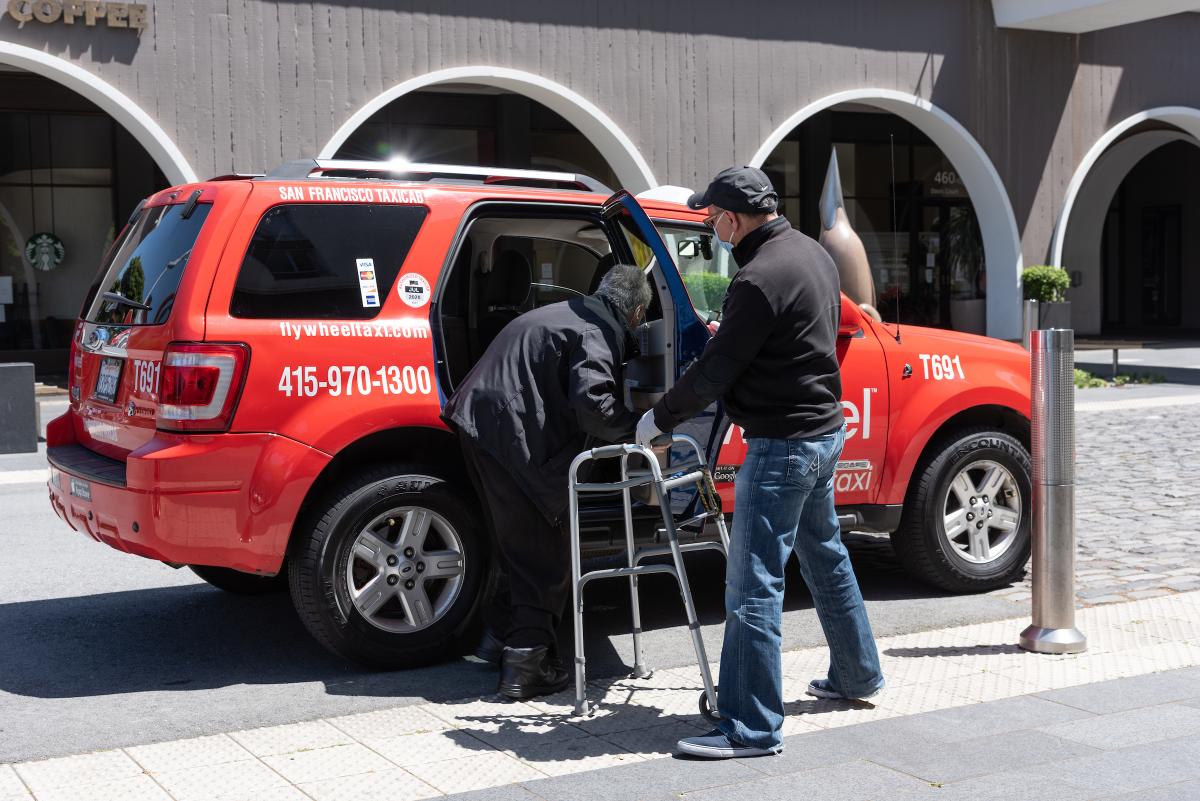
 In early October, a San Francisco jury found that the SFMTA did not breach its taxi medallion program Lender Agreements with the San Francisco Federal Credit Union. Throughout this litigation, the SFMTA has continued to focus its attention on supporting purchased medallion holders and drivers. In fact, over a year ago, the SFMTA made an offer to settle the lawsuit by providing millions of dollars in loan forgiveness to medallion holders. Unfortunately, the SF Credit Union opted to continue its lawsuit against us. With the trial now behind us, we are hopeful that the Credit Union will engage in the necessary dialogue with us and agree to participate in a loan forgiveness program.
In early October, a San Francisco jury found that the SFMTA did not breach its taxi medallion program Lender Agreements with the San Francisco Federal Credit Union. Throughout this litigation, the SFMTA has continued to focus its attention on supporting purchased medallion holders and drivers. In fact, over a year ago, the SFMTA made an offer to settle the lawsuit by providing millions of dollars in loan forgiveness to medallion holders. Unfortunately, the SF Credit Union opted to continue its lawsuit against us. With the trial now behind us, we are hopeful that the Credit Union will engage in the necessary dialogue with us and agree to participate in a loan forgiveness program.
We understand the challenges faced by individuals who purchased taxi medallions. Specifically, the fixed $250,000 price for a medallion is unsustainable, and needs to be lowered. Unfortunately, the SF Credit Union's Lender Agreement requires the Credit Union to consent to a lower price. For more than four years, the SFMTA has been advocating that the SF Credit Union allow us to lower the medallion sales price. It is time for the Credit Union to work collaboratively with the SFMTA on a plan to do that.
When taxis came under SFMTA’s umbrella in 2009, the method for distributing taxi medallions (a permit to operate a cab) was dysfunctional. Until then, the fixed number of medallions available were distributed to taxi drivers in the order that they had placed their names on a list. There was fierce opposition to adding more permits, and the existing medallions were basically held for life. As a result, drivers could wait 15 years or more for their name to rise to the top of the waiting list. Proposition K, passed by voters in 1978, established a driving requirement for medallion holders, but many drivers were not in compliance. Adding to what was becoming a dysfunctional medallion system, the industry suffered from a reputation for poor customer service with no accountability.
To help solve these longstanding challenges, the SFMTA established a pilot taxi medallion sale program in 2010. The early years of the program successfully allowed older medallion holders to retire, with a $200,000 windfall. Revenues from medallion sales went primarily to medallion holders and drivers (approximately $110M), and another $63M received by the SFMTA was applied toward supporting transit during the aftermath of the 2008-09 recession.
The medallion sale program also allowed younger drivers to become small business owners by purchasing and holding a highly sought-after medallion.
Unfortunately, a new and disruptive car service model was launched during this time, which allowed companies such as Uber and Lyft to begin operating in San Francisco outside the jurisdiction of the SMFTA and taxi industry rules. Although the California Public Utilities Commission (CPUC) ultimately asserted jurisdiction over the “ride hail” industry, the framework they established ignored San Francisco’s taxi regulations (for example, the CPUC doesn’t require fingerprint background checks for drivers and they allow prices to change throughout the day). Launched with incentives for drivers, seemingly unlimited venture capital advantage and free of oversight, the “ride hail” industry quickly came to dominate.
The SFMTA Taxi Services team is focused on supporting the purchased medallion holders and drivers. Already, taxis have become increasingly competitive in the market place. We are eager to continue our work to simplify the medallion system in support of the purchased medallion program, promote improvements in customer service and support the competitiveness of the taxi industry. This work is all the more important as taxis recover from the tremendous impact of the COVID-19 pandemic, and we hope the Credit Union will be part of the solution.
We look forward to working with the industry in developing these reforms before presenting them to the SFMTA Board of Directors in 2022.

























